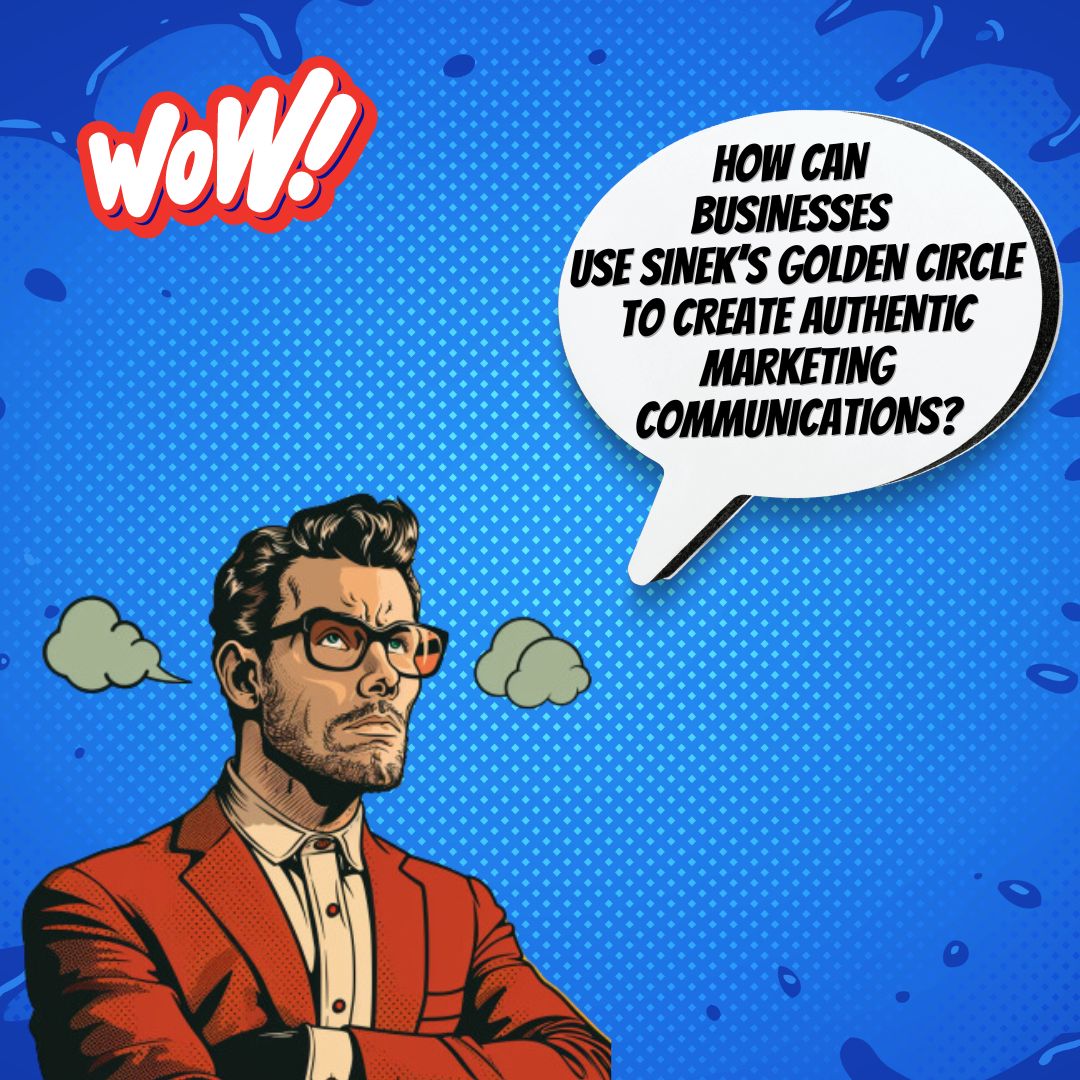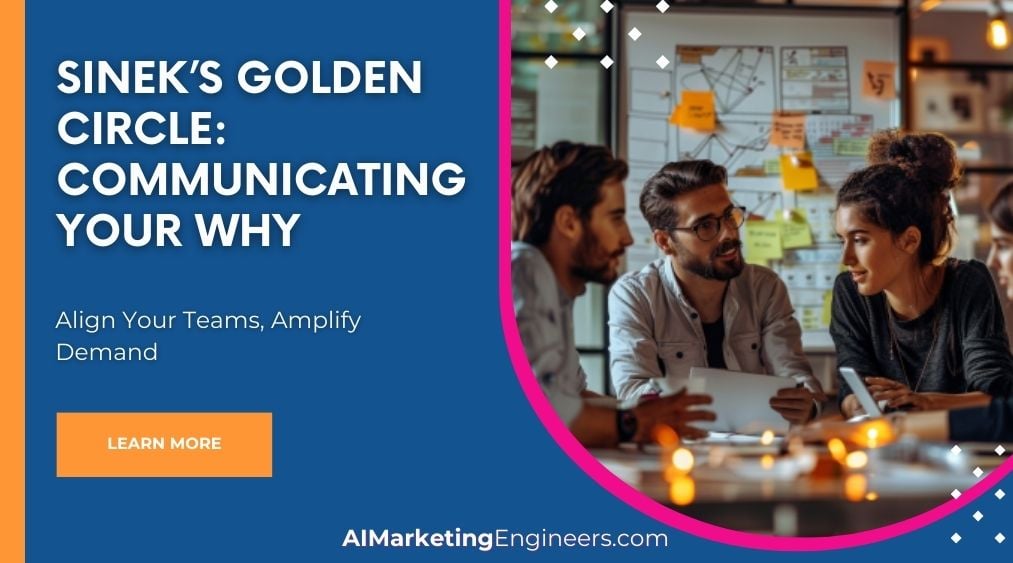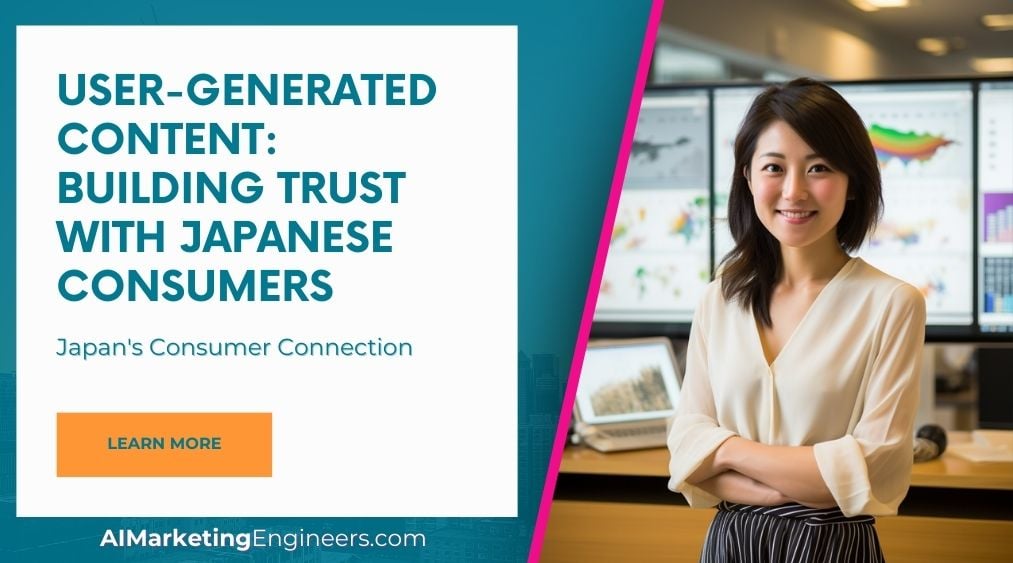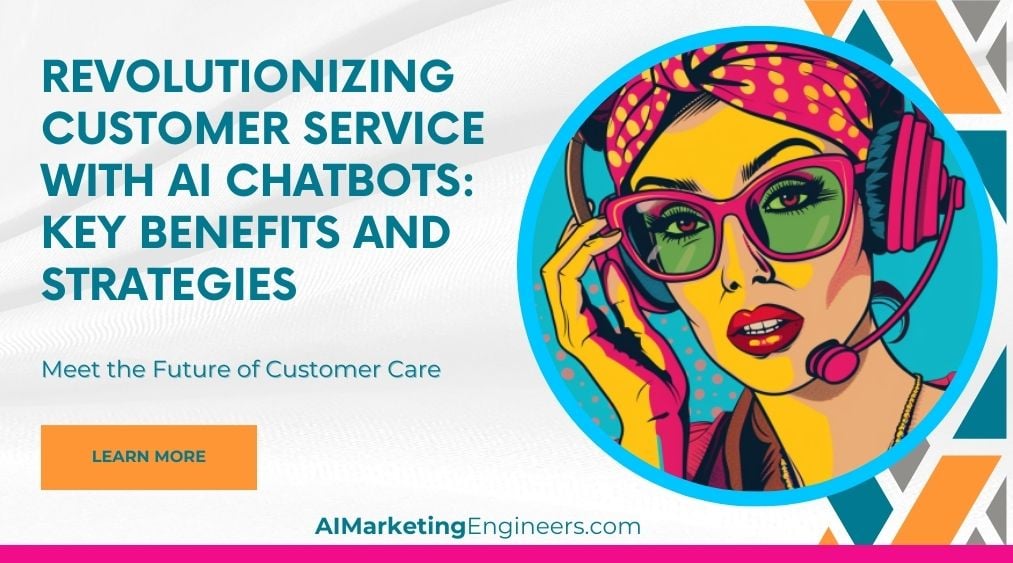Key Takeaways
✅ Start with the "Why": The essence of Simon Sinek's Golden Circle lies in beginning with the 'Why.' Statistics show that brands with a clear purpose outperform the market by 120%. Defining a company’s reason for existence not only fuels passion but also significantly impacts its success by connecting deeply with customers and employees on an emotional level. To implement this, businesses should introspect to find their core beliefs and communicate these as the cornerstone of their narrative.
✅ Communicate Your "Why" Effectively: Once identified, your 'Why' must be communicated effectively. Research indicates that consistent brand presentation across all platforms can increase revenue by up to 23%. Embedding your 'Why' in your brand story ensures it resonates with your audience and guides all your actions. Businesses can achieve this through a unified message in their marketing materials, website content, and interactions with customers, ensuring the 'Why' is unmistakable and compelling.
✅ Inspire Trust and Loyalty: Building trust and fostering loyalty are paramount, and the 'Why' is your most powerful tool in this venture. Approximately 64% of consumers cite shared values as the main reason they have a relationship with a brand. Communicating your 'Why' authentically can help form invaluable customer relationships grounded in trust and loyalty, achieved through exceptional service, personalization, and a steadfast commitment to your 'Why'.

Introduction
Have you ever wondered why some brands just feel different? Why do we form deep connections with some and not others? At the heart of this phenomenon lies Simon Sinek's Golden Circle—a potent framework that uncovers the power of Communicating Your Why. This article dives into the groundbreaking concept that has reshaped how businesses think about their brand messaging and strategy.
The Golden Circle isn’t just another marketing model. It’s a reflection of human behavior and psychology, rooted in the belief that when organizations articulate their purpose (the 'Why') before anything else, they can engage with their audience on a significantly more profound level. This approach doesn’t just attract customers; it creates loyal advocates. By aligning your operations and communications around your 'Why', you can unlock unparalleled growth and foster an unwavering connection with your audience.
Stay tuned as we unveil practical applications and benefits of the Golden Circle, including improved team motivation, customer loyalty, and overall business success. You're about to discover actionable insights and innovative strategies that will transform your marketing, leadership, and organizational culture. Prepare to unlock the full potential of your brand by communicating your 'Why' with unprecedented clarity and passion.

Top Statistics
| Statistic | Insight |
|---|---|
| 67% of investors planned to buy more shares of companies that adhere to ESG standards. | This shows a clear shift towards responsible investing, positioning businesses that communicate their "why" in alignment with ESG principles for success. |
| 71% of consumers value alignment with a company's mission and values. | Demonstrates the importance of a company's purpose in connecting with its customers, beyond just the products or services it offers. |
| Companies that start with the "why" are more likely to attract loyal customers and employees. | Indicates that beginning with a strong purpose is crucial for building a community of supporters, both within and outside the organization. |
| The Golden Circle method improves employee engagement, innovation, and supportive technology. | Highlights the method's effectiveness in fostering a healthier work environment and stimulating creative thinking. |
| Inspiring leaders and companies think, act, and communicate from the inside out. | Shows the power of leading with a clear and compelling "why" in inspiring others and driving action. |
Understanding Simon Sinek's Golden Circle
Simon Sinek introduced the Golden Circle, a model that revolutionized how organizations and leaders think about communicating with their audience. At its core, the Golden Circle is based on the belief that explaining why you do something is much more compelling than explaining what you do or how you do it. This approach taps into the emotional aspect of decision-making, suggesting people are inspired to act because of a shared belief or purpose, not just because they need a product or service.

The Three Layers of the Golden Circle
The Golden Circle is made up of three concentric layers: Why, How, and What. The Why is the heart of the matter, representing the purpose, cause, or belief that stands as the reason behind existence. The How details the specific actions taken to realize the Why — the values or principles that bring it to life. Lastly, the What encompasses the tangible outcomes or services an entity provides. By aligning these three layers, organizations can communicate more effectively, fostering a stronger connection with their audience.
The Science Behind Emotional Connection
Underpinning the Golden Circle is a body of neuroscience that explains why the model is so effective. Our decisions are made in the part of the brain that controls emotions, also responsible for our behavior and decision-making. By starting with the Why, messages directly appeal to this emotional core, making them more likely to inspire action. It's a strategy that transcends rational thought and appeals to our innate desire to be part of something larger than ourselves.
Applying the Golden Circle
How can you use the Golden Circle to communicate more effectively? It’s about starting with your Why: your purpose or belief that inspires action. This means flipping the traditional script of communication — rather than beginning with what you offer (the product) and then explaining how it's different or better (the features or benefits), you start with why your organization exists in the first place. This approach not only attracts customers but also employees and partners who share your fundamental beliefs, thereby enhancing loyalty, motivation, and engagement.

The Benefits of Knowing Your Why
Adopting the Golden Circle framework can bring about significant improvements in areas such as hiring, retention, productivity, and overall quality of work. It creates a work environment where people feel aligned with the organizational values, leading to increased motivation and a sense of belonging. Employees are not just showing up for a paycheck; they’re part of a movement, working towards a shared purpose. This alignment of values and purpose is also attractive to consumers, who are more likely to choose products or services from companies whose Why resonates with their own beliefs.
Practical Applications and Resources
Implementing the Golden Circle isn't solely for top-tier executives; it's applicable at every level of an organization and in any context where communication plays a pivotal role. From crafting powerful value propositions that resonate with your audience, to defining an organizational strategy that aligns with your core beliefs, or even to motivating a team, the Golden Circle provides a framework for articulating a shared vision that inspires action. There are numerous resources and templates available online for those interested in applying these principles to their work, offering a practical step-by-step guide to defining your Why, How, and What.
Through the Golden Circle, Simon Sinek has provided a simple yet powerful tool for enhancing communication, fostering deeper connections, and driving meaningful action. Its universality and applicability make it a valuable framework for anyone looking to inspire or lead, whether in business, non-profits, or any other collective endeavor that seeks to make a difference.

AI Marketing Engineers Recommendation
Recommendation 1: Leverage social media to communicate your 'Why' through storytelling: Insights show that 55% of consumers learn about new brands on social media (Sprout Social, 2022), making it an invaluable platform for storytelling. By incorporating your 'Why' into every social media post, video, or campaign, you can emotionally engage your audience at a deeper level. Highlight how your company's core beliefs drive its actions, products, or services. Use real stories of people your company has impacted or how your products are made with a greater purpose in mind to create a genuine connection with your audience.
Recommendation 2: Integrate 'Why' into customer experience and feedback loops: In an era where customer experience can make or break a brand (PwC, 2020), integrating your 'Why' into every touchpoint can significantly differentiate your business. From how you design your website to the language used in customer communications, let your 'Why' guide the experience. Encourage customer feedback through surveys or social listening to understand if your 'Why' truly resonates with them. This approach not only humanizes your brand but also continually informs and improves your delivery, making your 'Why' both visible and felt.
Recommendation 3: Use analytics to measure the impact of your 'Why' on your marketing performance. With digital marketing analytics tools like Google Analytics or HubSpot, you can track how well your 'Why'-centric content is performing. Look at metrics such as engagement rates, time spent on page, and conversion rates to see if and how effectively your 'Why' is resonating with your audience. Adjust your strategies based on this data to better communicate your 'Why,' ensuring it's not just heard but also inspires action.

Conclusion
In wrapping up our journey through Simon Sinek's Golden Circle and its powerful model of communicating your why, it's clear that this concept is not just a marketing strategy; it's a profound way of connecting with others on a level that transcends the superficial. The Golden Circle encourages us to start with why – our purpose, cause, or belief that inspires us to do what we do. This is about more than just selling a product or offering a service; it's about sharing something we deeply believe in, something that can truly resonate with others.
Understanding the three layers of the Golden Circle - "Why," "How," and "What" - has shown us the importance of aligning our values and principles with our actions. It's not just about what we do or how we do it but, most crucially, why we do it. The neuroscience behind the Golden Circle further validates this approach by illustrating how starting with "why" taps into the emotional part of our brain, fostering a deeper connection and loyalty.
By applying the Golden Circle in our communication efforts, we can inspire those around us - whether they're customers, employees, or partners - to share in our vision and take action. This not only leads to better hiring, retention, and productivity but also cultivates an environment where everyone is moved by a common purpose.
Moreover, the practical applications of the Golden Circle, from crafting value propositions to outlining organizational strategy, show the versatility and impact of starting with why. The benefits of employing this model are extensive, creating a ripple effect that can transform an organization's culture, its people's mindset, and its overall performance.
As we part ways with the Golden Circle, let's carry forward the challenge to not only communicate our "why" but to live it, breathe it, and inspire others with it. The question now is not if we will employ Simon Sinek's invaluable insights but how we will use them to make a difference in our world. Will you take up this mantle and use your why to lead with purpose and passion?

FAQs
Question 1: What is the Golden Circle?
Answer: The Golden Circle is a leadership tool developed by Simon Sinek that helps individuals and organizations communicate their purpose and values effectively. It consists of three concentric circles: Why, How, and What.
Question 2: What is the purpose of the Golden Circle?
Answer: The Golden Circle helps leaders inspire collaboration, trust, and transformation within their organizations by starting with the "Why" and then moving to the "How" and "What".
Question 3: What are the three components of the Golden Circle?
Answer: The three components are:
- Why: The purpose or higher meaning behind an organization or individual's actions.
- How: The strategies and processes used to achieve the "Why."
- What: The concrete actions and products that result from the "Why" and "How".
Question 4: How does the Golden Circle relate to the brain?
Answer: The "Why" appeals to the part of the brain that influences behavior, while the "How" and "What" interact with the limbic brain, which controls emotion and behavior.
Question 5: How does the Golden Circle apply to business models?
Answer: The Golden Circle helps businesses define their purpose, value creation processes, and products or services. It can be used to develop brand and marketing messages, align organizational values, and guide product development.
Question 6: What is the connection between the Golden Circle and the St. Gallen Management Model?
Answer: The St. Gallen Management Model, a system-oriented management theory, shares a similar structure with the Golden Circle, consisting of normative (Why), strategic (How), and operational (What) levels.
Question 7: How can I apply the Golden Circle in my leadership?
Answer: Start by identifying your "Why," then develop strategies (How) to achieve it, and finally define the concrete actions and products (What) that result from your purpose. Lead by example, promote innovation and growth, and foster a unified sense of purpose among team members.
Question 8: How can the Golden Circle improve my marketing strategy?
Answer: By focusing on the "Why" behind your products or services, you can create a consistent brand message, differentiate yourself from competitors, and appeal to customers on a deeper level. Use the Golden Circle to guide customer engagement strategies and create a clear direction for your marketing efforts.
Question 9: What are some examples of successful companies that use the Golden Circle?
Answer: Companies like Apple, Tesla, and Spotify have successfully applied the Golden Circle to their business models, focusing on their "Why" to drive innovation and customer loyalty.
Question 10: How can I develop my "Why" statement?
Answer: Reflect on your motivations, values, and purpose. Ask yourself why you do what you do and what drives you. Your "Why" statement should be a compelling higher purpose that inspires you and others.

Academic References
- Sinek, S. (2009). Start with Why: How Great Leaders Inspire Everyone to Take Action. This cornerstone book introduces the revolutionary concept of the Golden Circle, providing a deep dive into why understanding and communicating your "why" is imperative for leadership and inspiring action.
- Glanzer, P. L. (2013). Building the good life: Using identities to frame moral education in higher education. In this study, the exploration centers around the significance of personal and collective identities in framing moral education. This perspective is crucial for comprehending the underpinnings of one's "why" and its influence over leadership decisions and actions.
- van der Klein, R. (2016). Mr. Sinek, it’s time to update the Golden Circle: Why in rapidly changing world we start with WHO. This intriguing article proposes an evolution of the Golden Circle theory, advocating for the inclusion of "WHO" to highlight the crucial role of human relationships in shaping and driving our "why".






